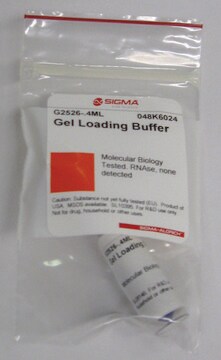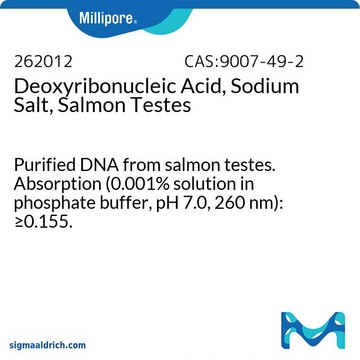D4154
Plasmid DNA from E. coli RRI
pUC18, buffered aqueous solution
About This Item
Empfohlene Produkte
Biologische Quelle
Escherichia coli (RRI)
Qualitätsniveau
Qualität
for molecular biology
Form
buffered aqueous solution
Versandbedingung
dry ice
Lagertemp.
−20°C
InChI
1S/C15H31N3O13P2/c16-13-1-7(20)11(28-13)5-25-32(21,22)31-9-3-15(18)29-12(9)6-26-33(23,24)30-8-2-14(17)27-10(8)4-19/h7-15,19-20H,1-6,16-18H2,(H,21,22)(H,23,24)
InChIKey
AWBASQCACWFTGD-UHFFFAOYSA-N
Suchen Sie nach ähnlichen Produkten? Aufrufen Leitfaden zum Produktvergleich
Allgemeine Beschreibung
Anwendung
Biochem./physiol. Wirkung
Foreign DNA inserted at the MCS abolishes the ability to catabolize lactose. Lactose-positive, ampicillin-resistant colonies (host strain containing plasmid) form blue colonies on plates containing ampicillin and X-Gal; lactose-negative, ampicillin-resistant colonies (host strain containing plasmid with foreign DNA inserted at the MCS) form white colonies on this medium. The orientations of the MCS regions in the pUC plasmids are analogous to those of the corresponding M13 phage.
Komponenten
Prinzip
Ähnliches Produkt
Lagerklassenschlüssel
10 - Combustible liquids
WGK
WGK 1
Flammpunkt (°F)
Not applicable
Flammpunkt (°C)
Not applicable
Analysenzertifikate (COA)
Suchen Sie nach Analysenzertifikate (COA), indem Sie die Lot-/Chargennummer des Produkts eingeben. Lot- und Chargennummern sind auf dem Produktetikett hinter den Wörtern ‘Lot’ oder ‘Batch’ (Lot oder Charge) zu finden.
Besitzen Sie dieses Produkt bereits?
In der Dokumentenbibliothek finden Sie die Dokumentation zu den Produkten, die Sie kürzlich erworben haben.
Kunden haben sich ebenfalls angesehen
Unser Team von Wissenschaftlern verfügt über Erfahrung in allen Forschungsbereichen einschließlich Life Science, Materialwissenschaften, chemischer Synthese, Chromatographie, Analytik und vielen mehr..
Setzen Sie sich mit dem technischen Dienst in Verbindung.










